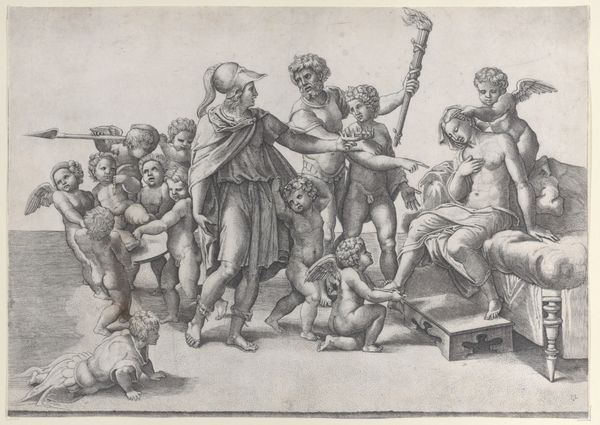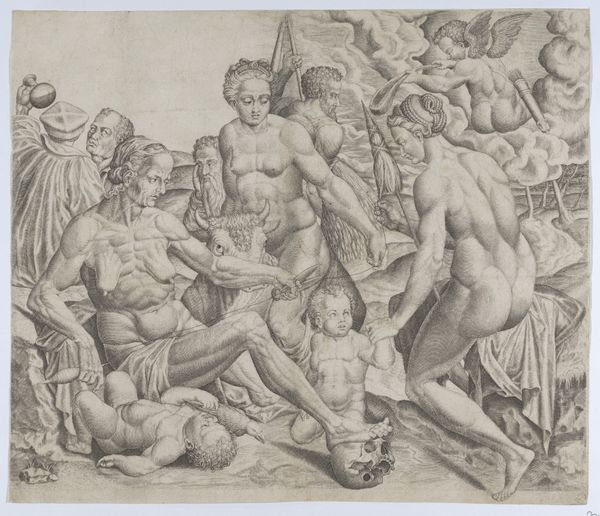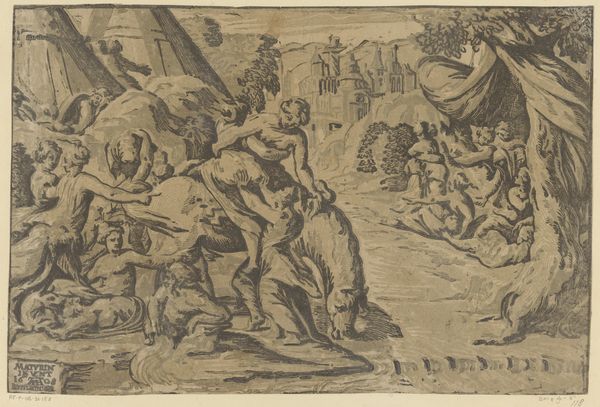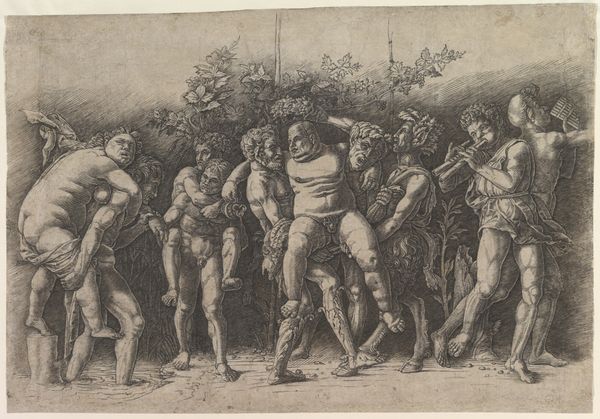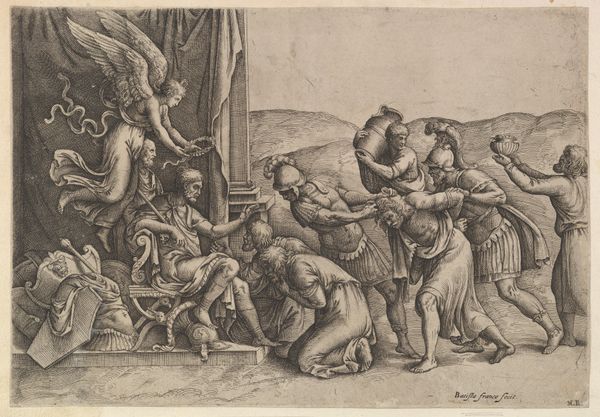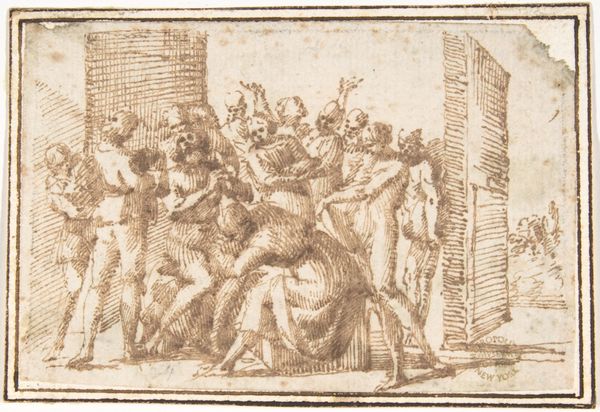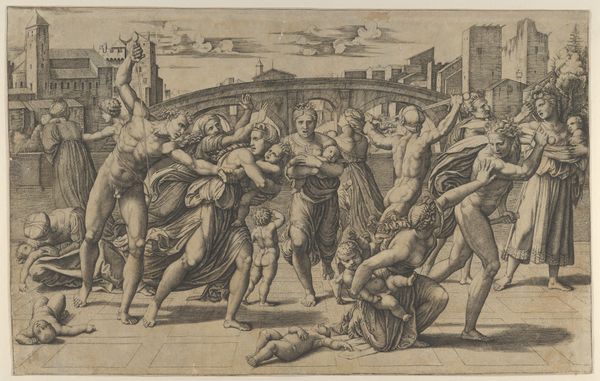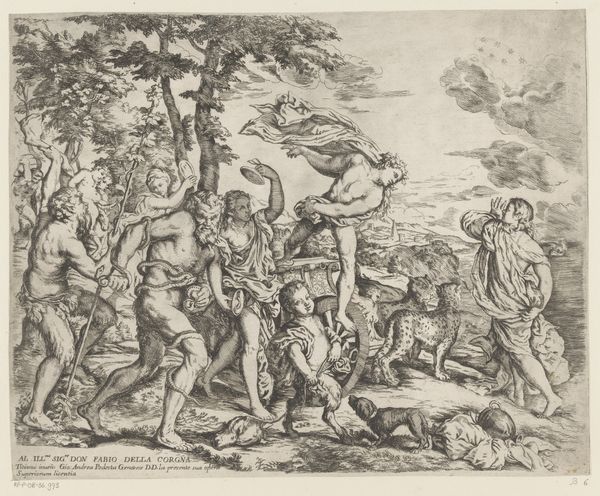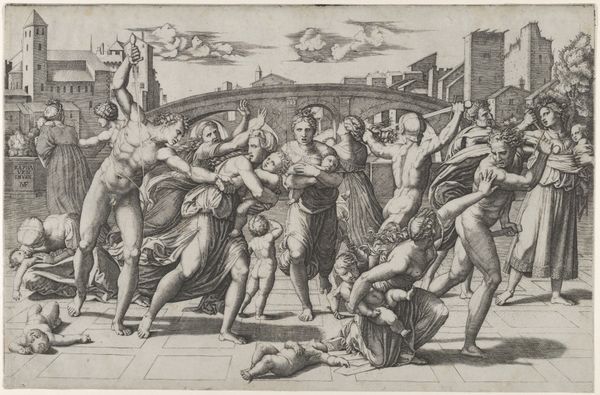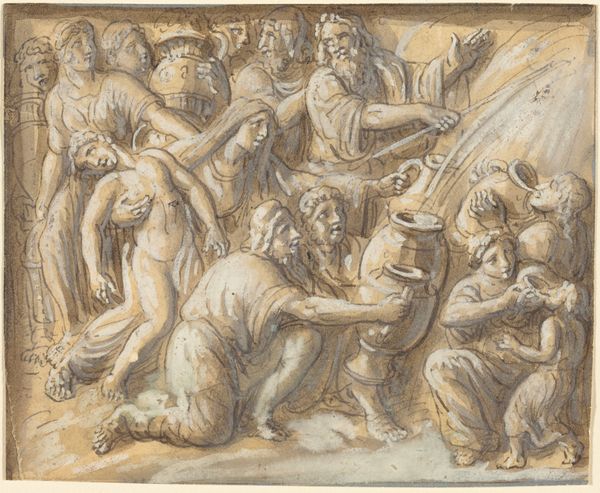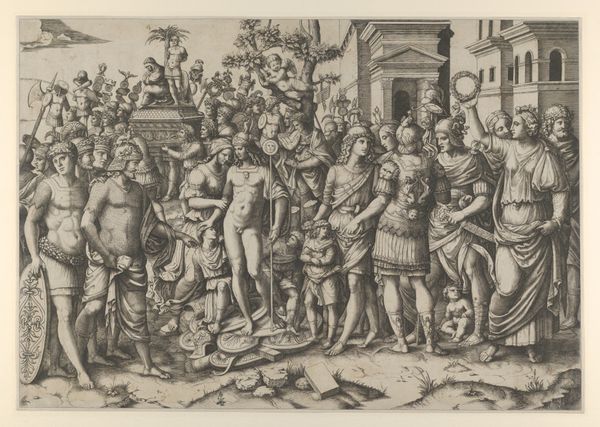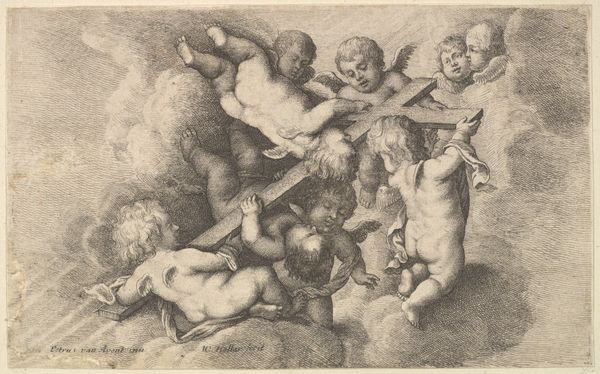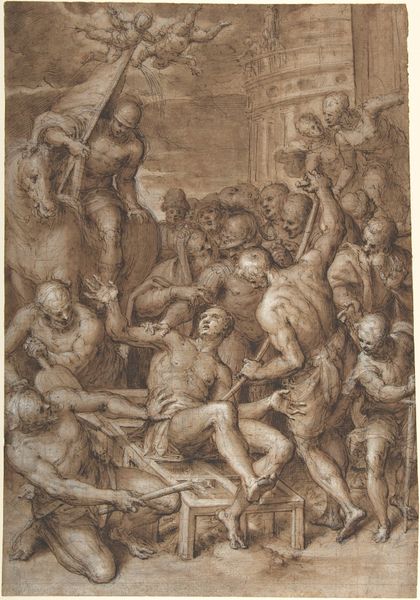
drawing, print, paper, engraving
#
drawing
# print
#
mannerism
#
figuration
#
paper
#
11_renaissance
#
history-painting
#
nude
#
engraving
Dimensions: 219 × 312 mm
Copyright: Public Domain
Editor: This is "Alexander and Roxana," an engraving on paper from the 16th century by Giovanni Jacopo Caraglio, housed here at the Art Institute of Chicago. The figures almost seem to tumble over each other, it’s so crowded. What kind of statement do you think this image is making? Curator: That crowded feeling is key. Remember Mannerism prized artifice and complexity. But beyond style, consider the image’s accessibility at the time. As a print, this scene of Alexander the Great’s wedding wasn't intended for private viewing only. Editor: So, it was meant to be distributed widely? Who would have been the intended audience and what was the aim of distributing it? Curator: Exactly. Prints allowed for broader circulation. Think of the wealthy merchant class, educated citizens interested in classical stories, and even other artists using it as inspiration. The aim? To showcase not just the historical event, but also the wealth and refined taste of those who could afford it. Alexander is, here, made relatable by way of celebration through nuptial culture. Editor: So, you're saying the image speaks as much to its present context as to the historical event? I was just focused on the many, many cupids! Curator: Precisely! Look at the nude figures, the opulent setting. Are we celebrating virtuous marriage or exotic power? Consider the politics of imagery here – is this really about marriage, or about consolidating social standing in Renaissance society? Editor: I hadn’t thought of it that way, I am starting to understand that artworks might mirror not just an event but the values of its time. Curator: That's the crux of it. And that's why looking at art through a historical lens makes you question the message, and the social structure that underpins the visual imagery.
Comments
No comments
Be the first to comment and join the conversation on the ultimate creative platform.
